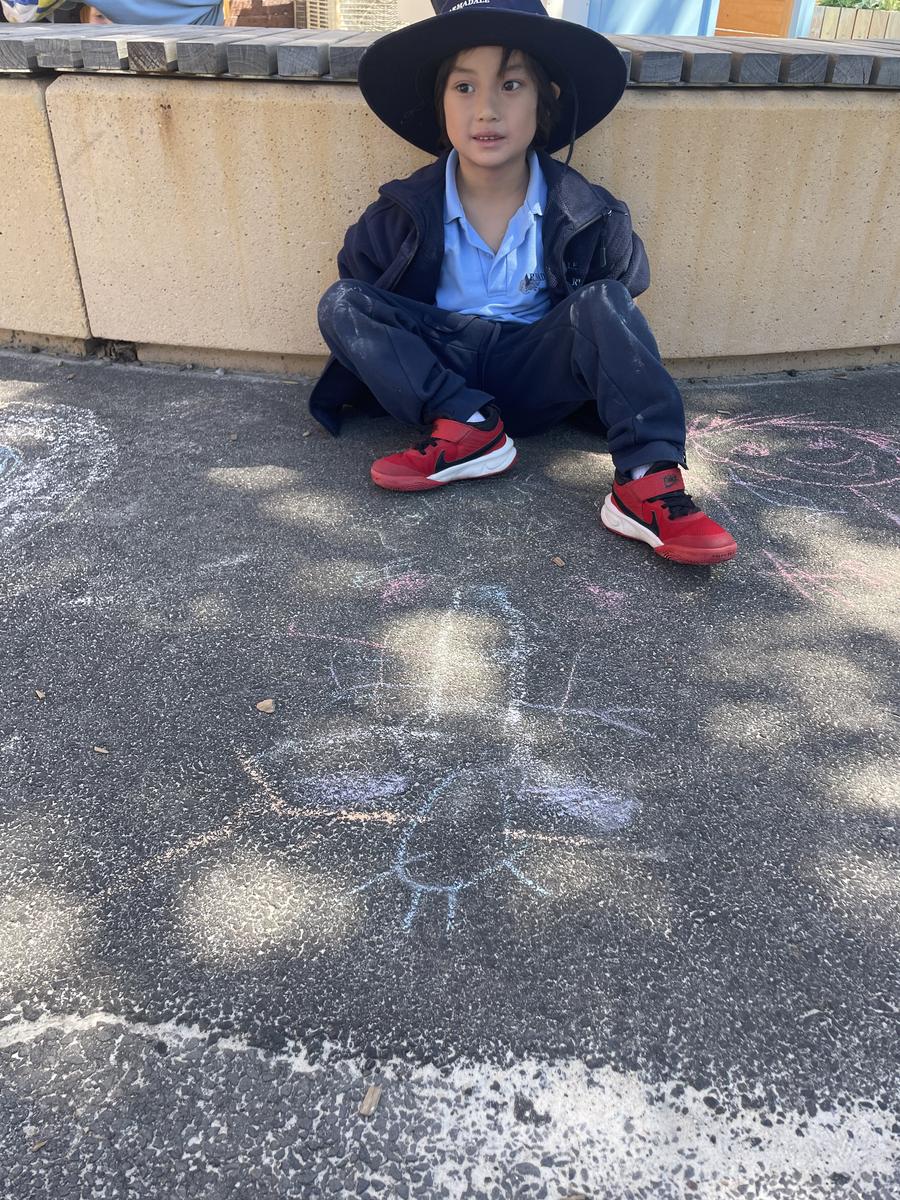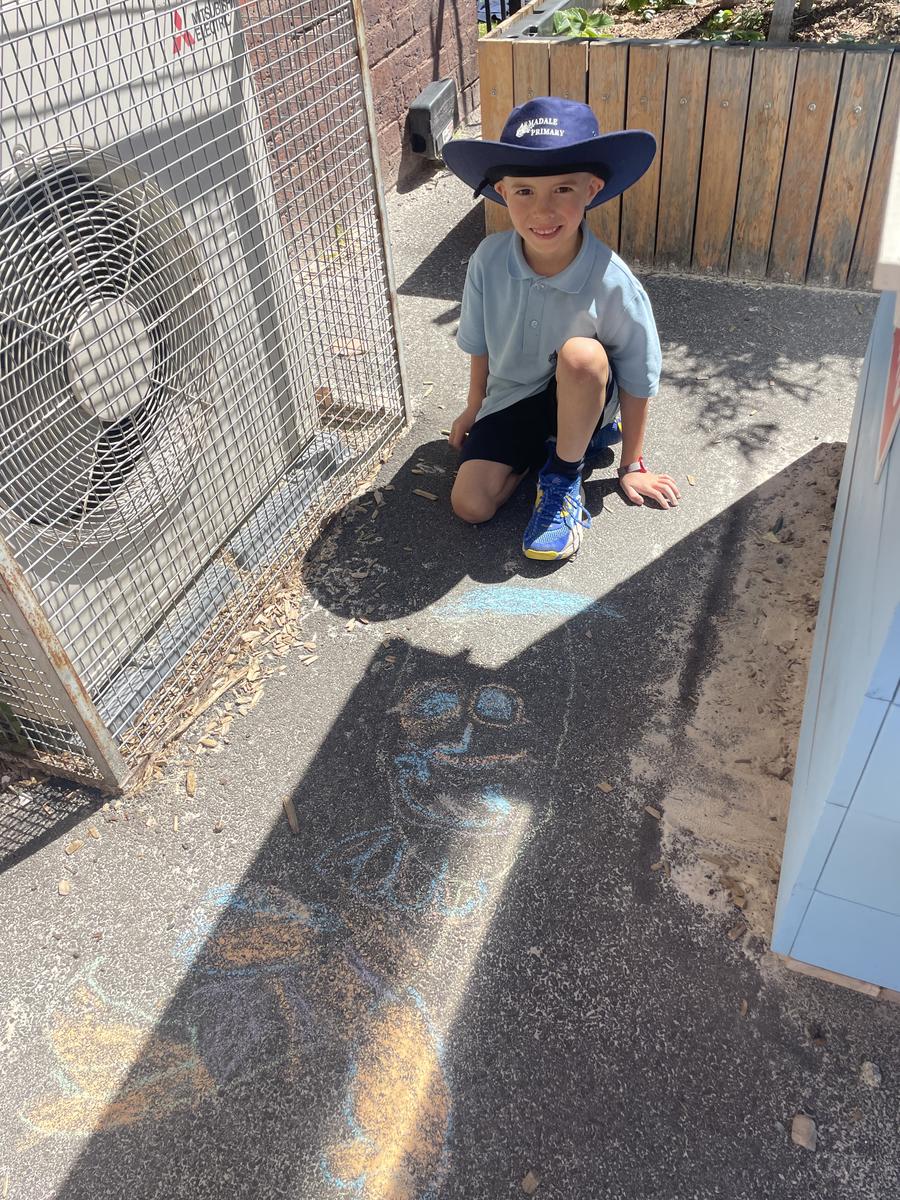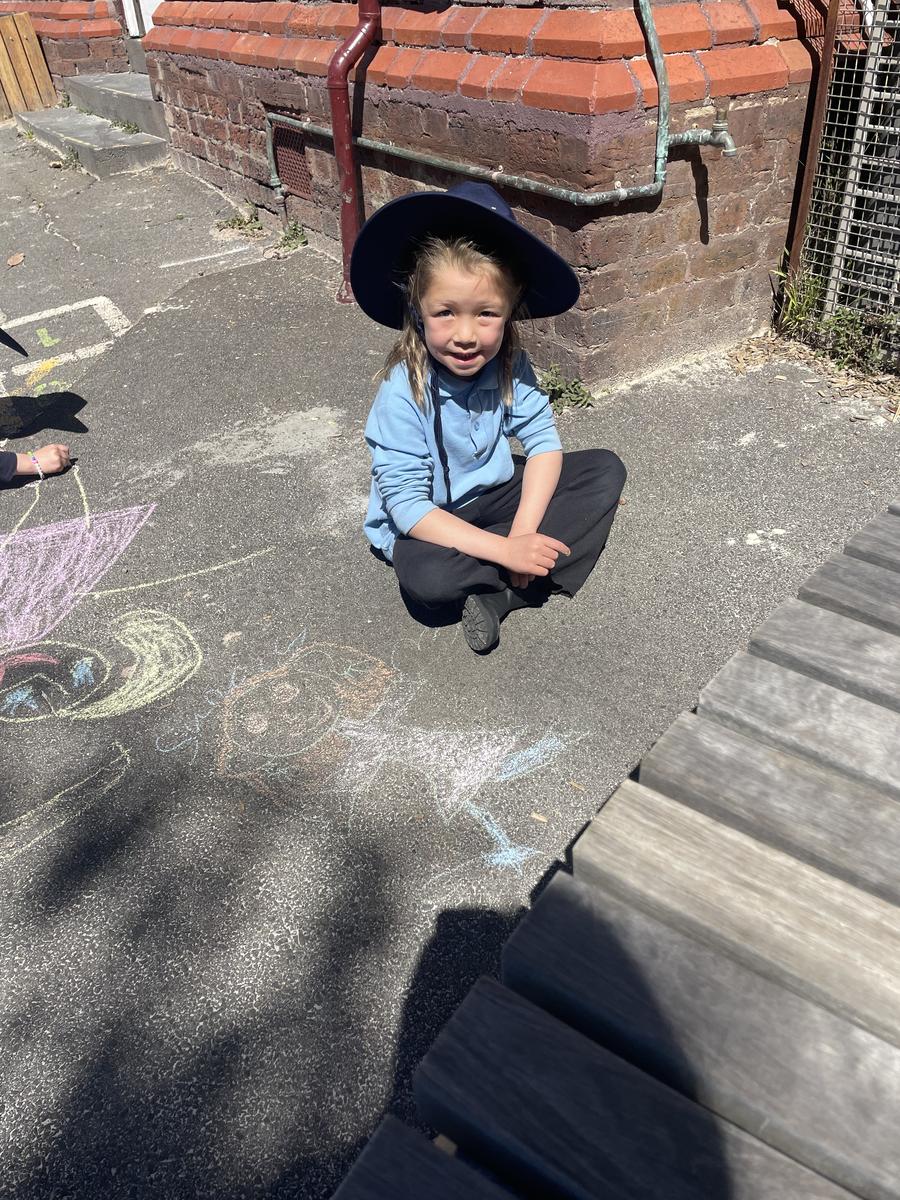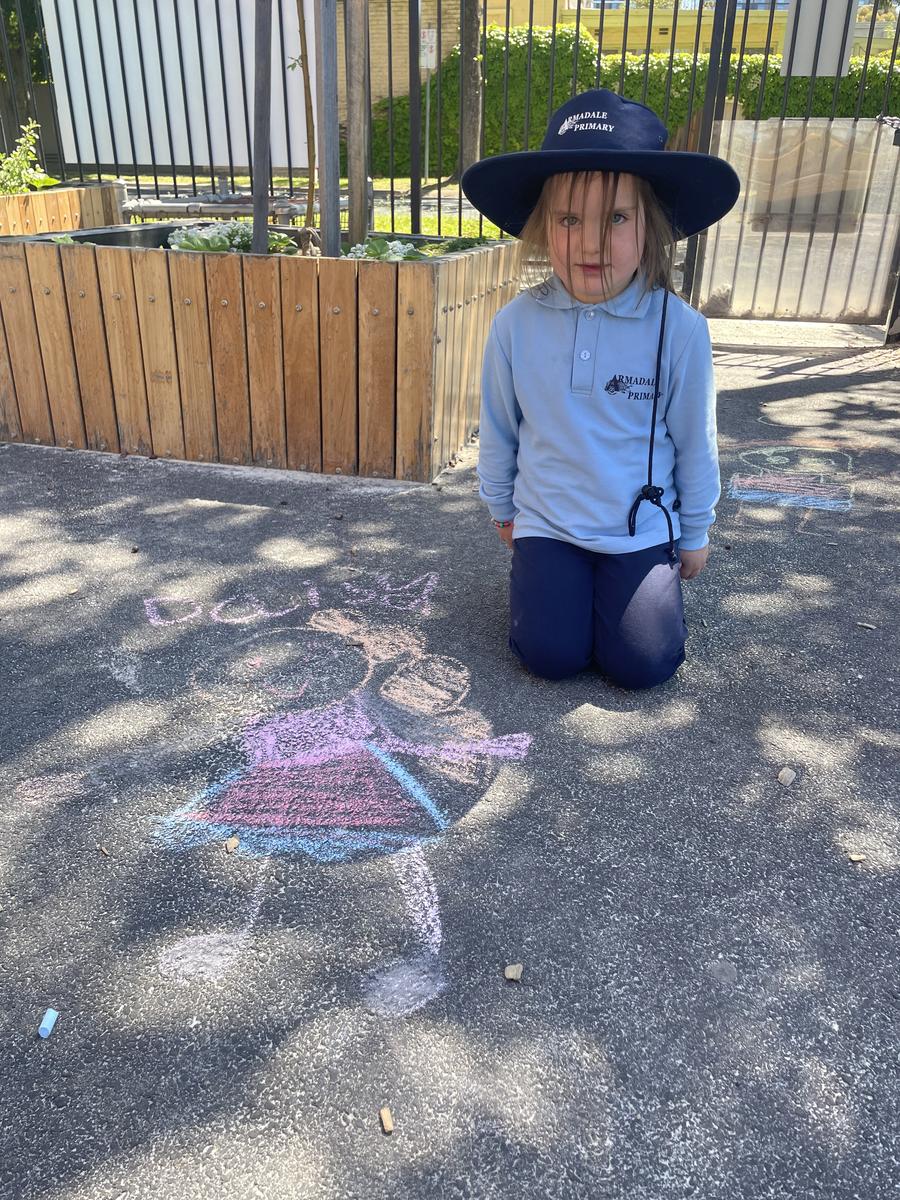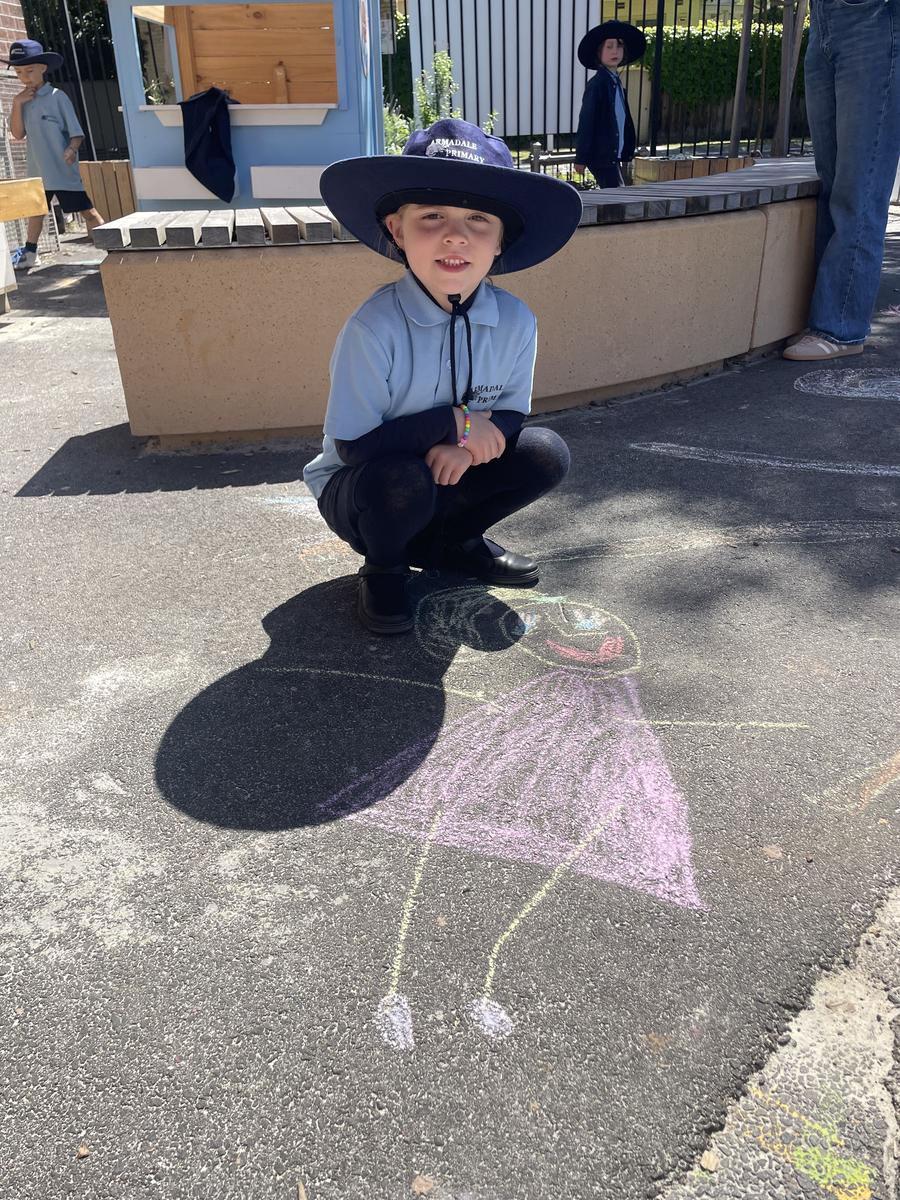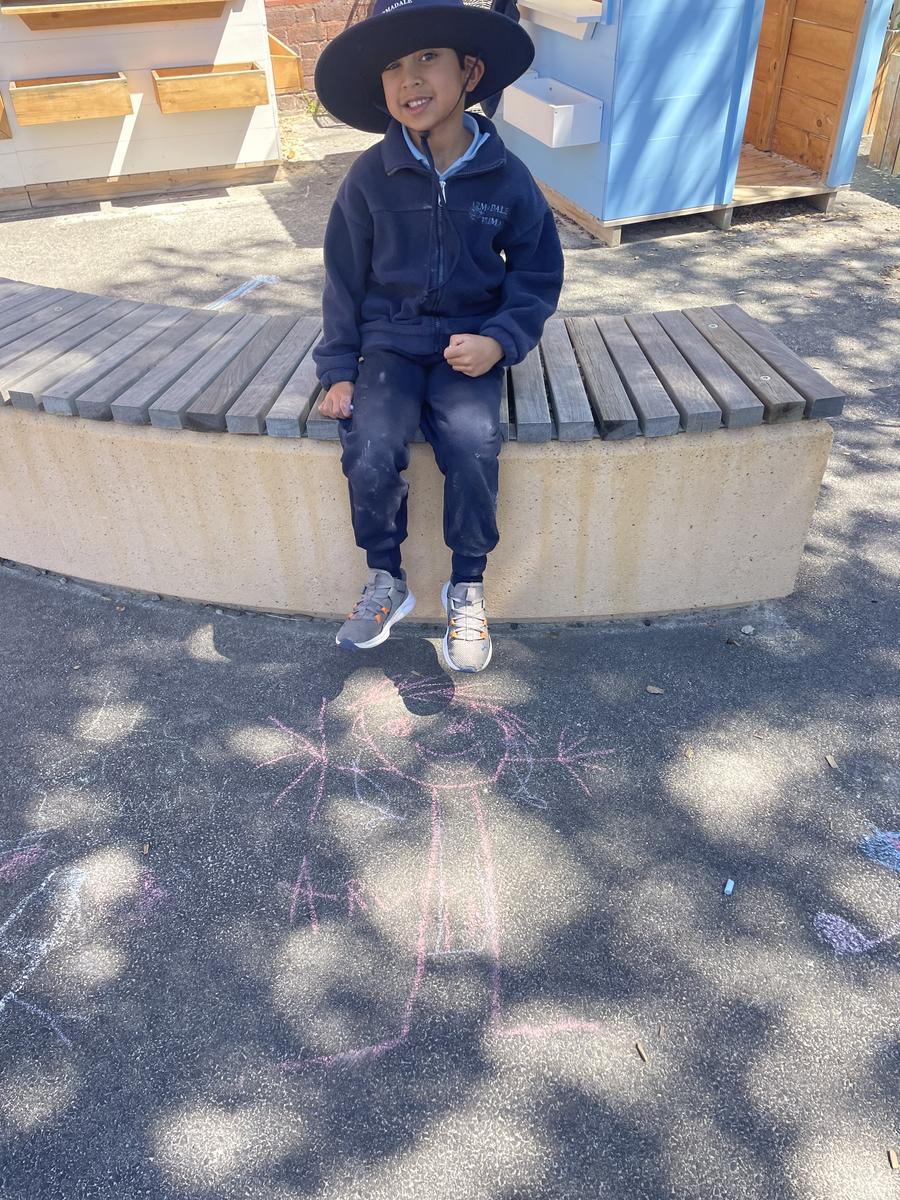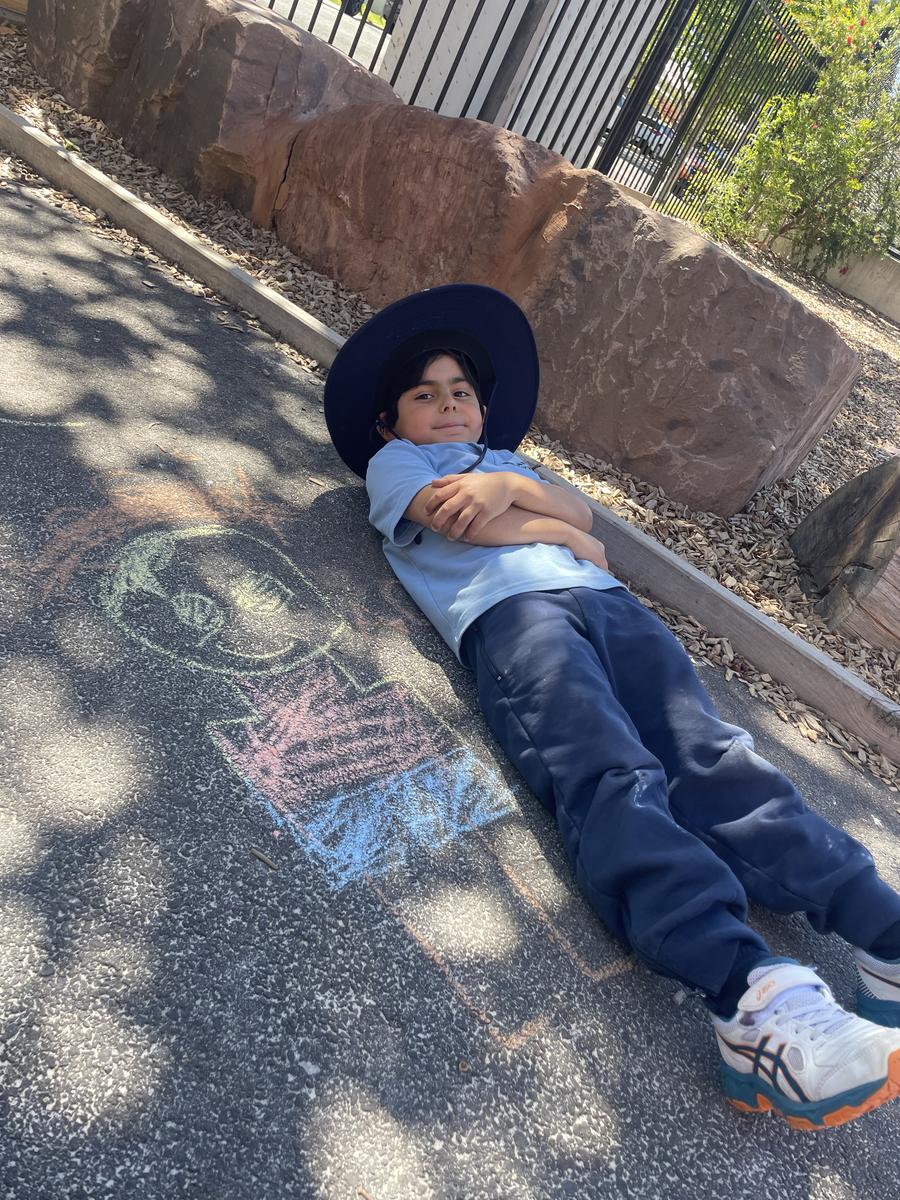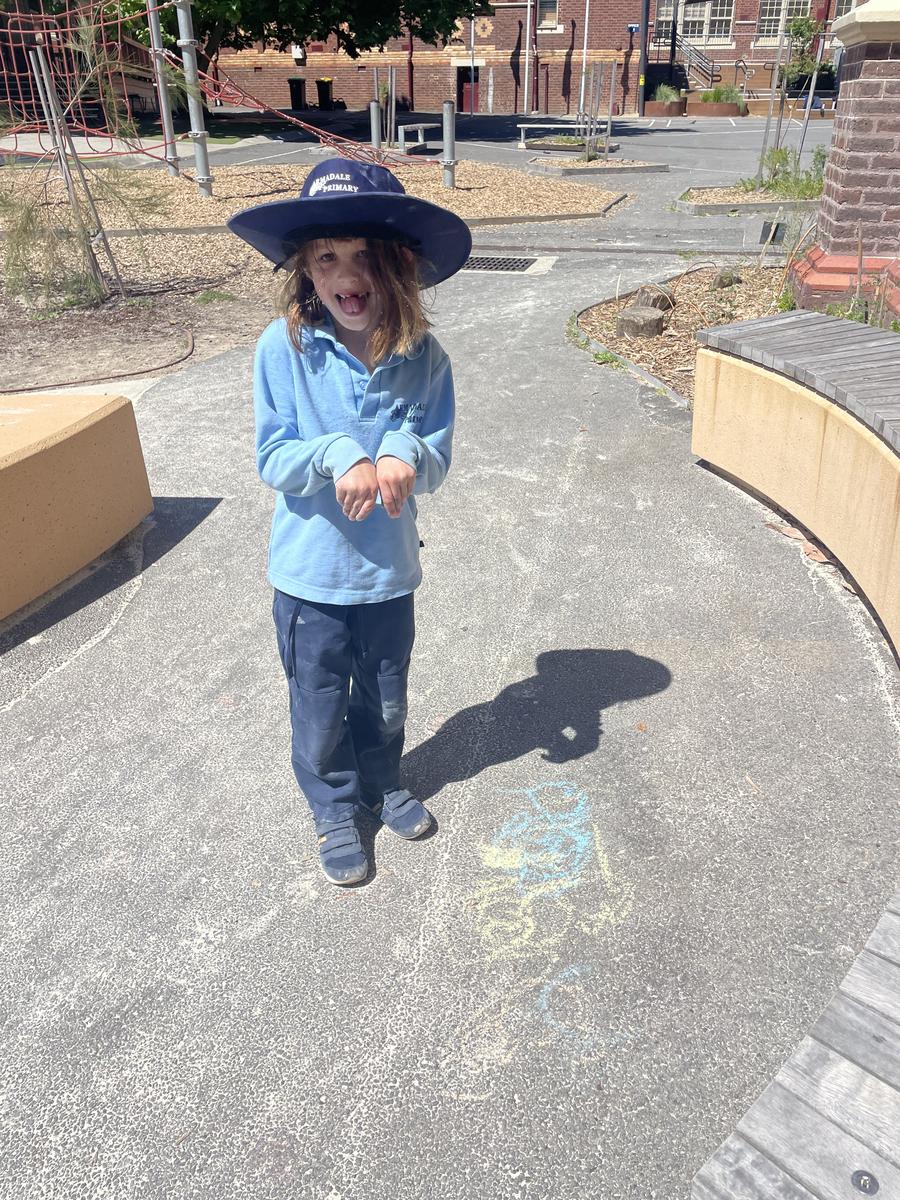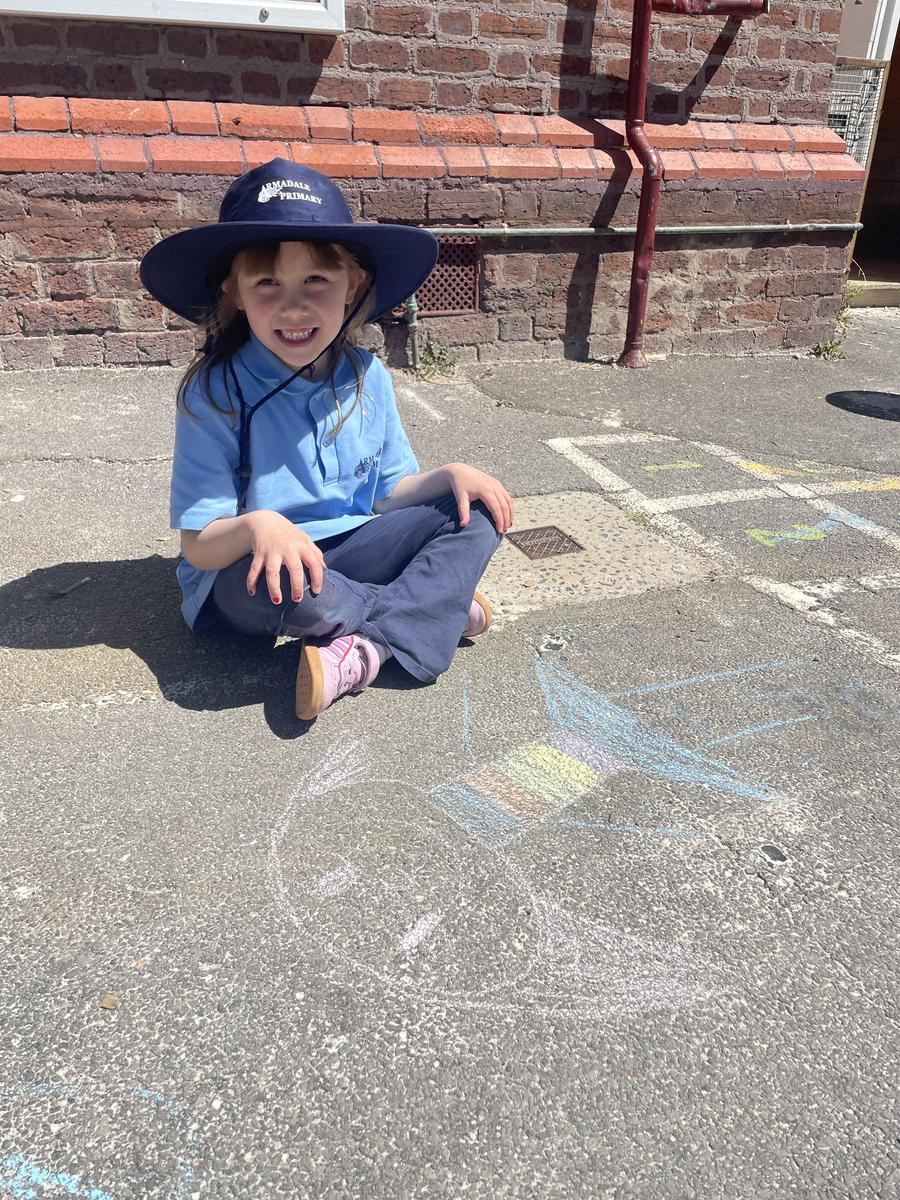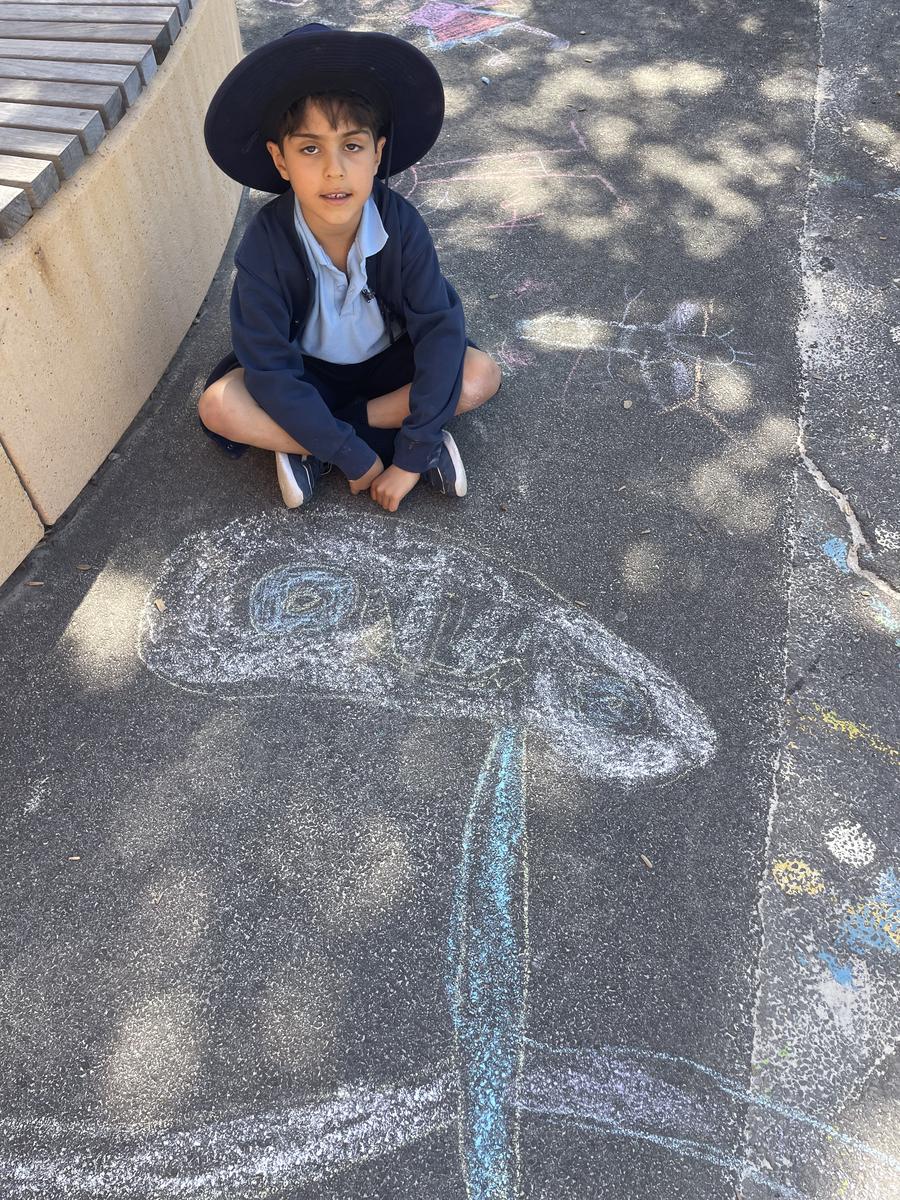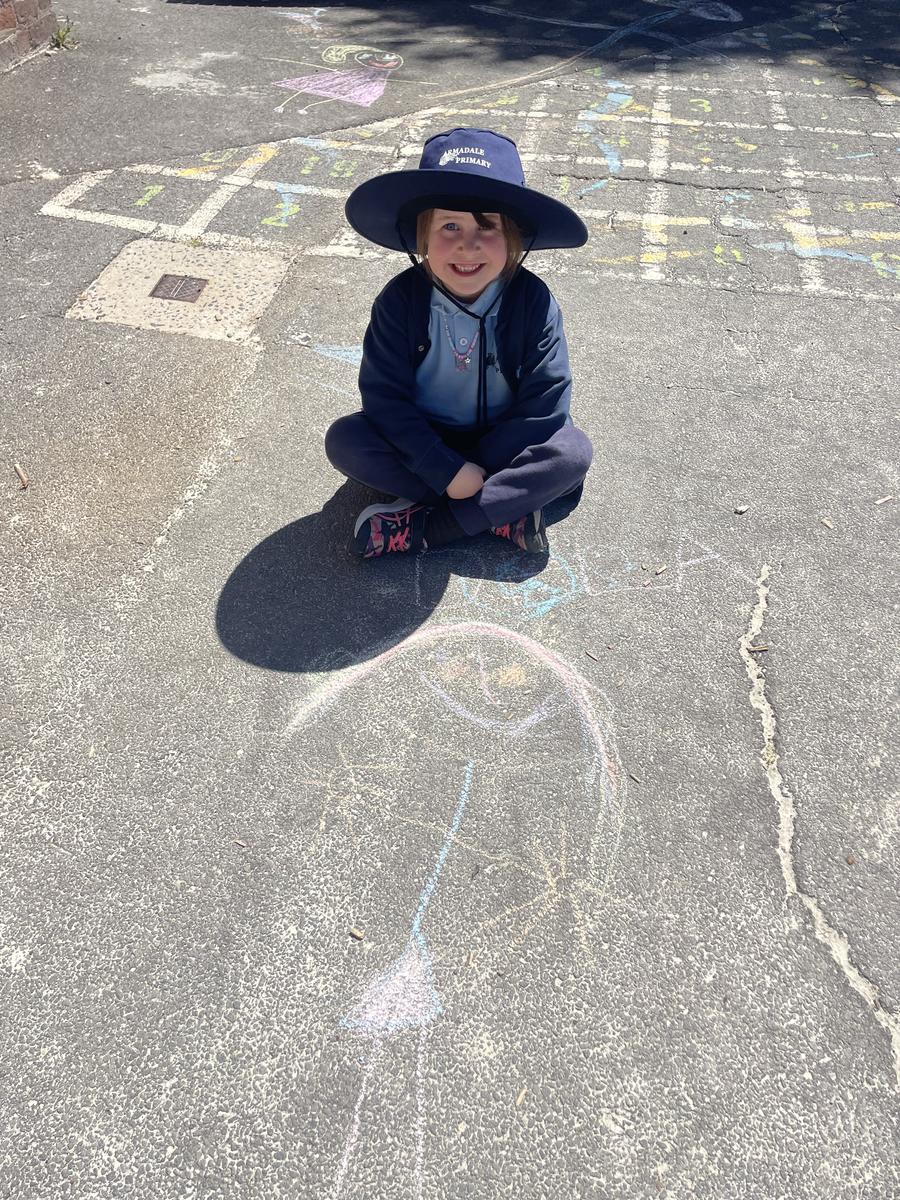Prep Bulletin

A snapshot into Wellbeing
Learning Intention:
We are learning to understand what makes a good friend and how we can show kindness and care towards others.
Learning Experience Overview:
This week in our wellbeing lesson, we read Chalk Boy, a story about friendship, kindness, and connection. After reading, students went outside and drew their own chalk friends. Through this activity, they explored how to be a good friend and how friends make us feel safe, happy, and included.
Whole: We read the story together and talked about what makes a good friend. How was Barnaby a good friend?
Small: Students created their own chalk friends.
Whole: We came back together as a class to share and celebrate everyone’s chalk creations.
In this learning experience, students will work towards:
- Identifying what makes a good friend
- Describing what makes a good friend
- Explaining how to be a good friend
Examples of student work:
Liam- My chalk friend cares about me. He plays with me when I don’t have a friend.
Daisy- My chalk friend helps me when I fall over.
Sadie - My chalk friend makes me feel happy when I feel sad.
Dela- My chalk friend helps me up when I fall over.
Emma- My chalk puppy cuddles me when I fall down.
Sunday- My chalk friend helps me read books.
Adrian- My chalk friend helps me when I fall down. He gives me a big hug.
Arvin- My chalk friend gives me everything when I need it.
Sofia- My chalk friend is kind.
Leo- My chalk friend says kind words to me.
Cillian- My chalk friend shares toys with me.
Jordan- My chalk friend helps me.
What You Can Do Now to Continue the Learning at Home from This Experience:
- Talk with your child about what makes a good friend and how they can be a kind friend at home and school.
- Encourage them to draw or create their own “friend” at home and describe what makes that friend special.
- Role play simple friendship situations, like asking someone to play, taking turns, or helping a friend who feels sad.
- Notice and praise acts of kindness your child shows to others.
Warm Regards,
Alyssa, Ruby and Julian
Prep Team
Alyssa.Thermos@education.vic.gov.au

